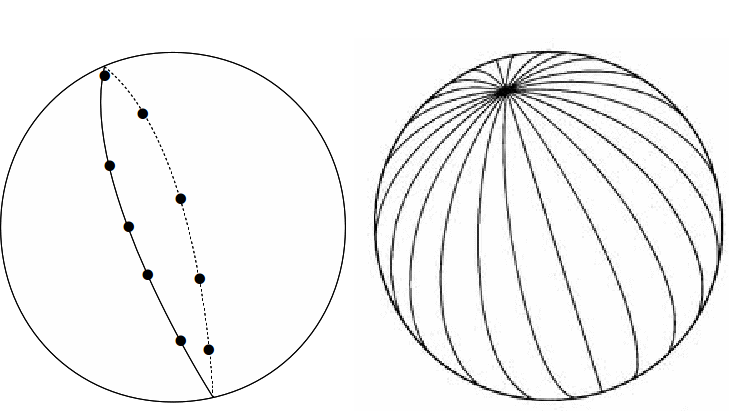A subdivision of a surface is called regular when every face has a boundary consisting of the same number of edges and the same number of edges meets at every vertex.
Euler's formula states
![]() (1) where
(1) where
![]() is the number of vertices
is the number of vertices
![]() is the number of edges
is the number of edges
![]() is the number of faces
is the number of faces
If each face has![]() edges, the total number of lines is
edges, the total number of lines is![]()
If![]() edges enter each vertex, we can also write
edges enter each vertex, we can also write![]()
Substitute these into (1) to obtain![]()
This equation has simple solutions in the table below.
|
v |
f |
E |
V |
F |
|
v=E |
2 |
E |
2 |
F=E |
|
2 |
f=E |
E |
V=E |
2 |
>
These solutions are shown below.

Other solutions exist. If![]() we obtain the trivial solutions
we obtain the trivial solutions![]() or
or![]()
If![]() the only solution is
the only solution is![]()
Suppose E>2 then![]()
The only possible values of![]() and
and![]() are 3, 4, 5. We can draw up the following table.
are 3, 4, 5. We can draw up the following table.
|
v |
f |
E |
V |
F |
Name |
|
3 |
3 |
6 |
4 |
4 |
Tetrahedron |
|
3 |
4 |
12 |
6 |
8 |
Cube |
|
3 |
5 |
30 |
12 |
20 |
Dedecahedron |
|
4 |
3 |
12 |
8 |
6 |
Octahedron |
|
5 |
3 |
30 |
20 |
12 |
Icosahedron |
In fact, if f=3 each face is a triangle. Triangles can be subdivided into triangles to form more regular subdivisions.

Similarly, ff f=4 each face is a rectangle. Rectangles can be subdivided into rectangles to form more regular subdivisions.
